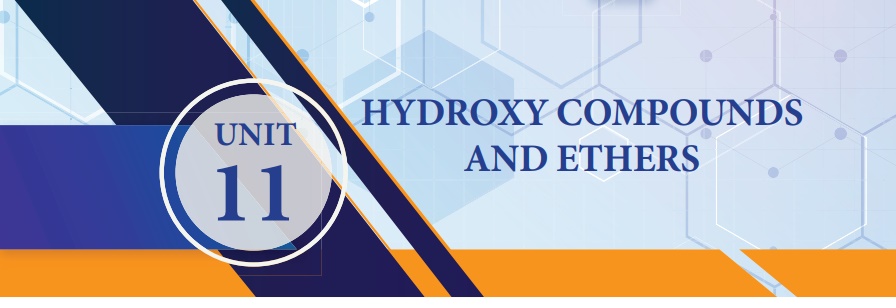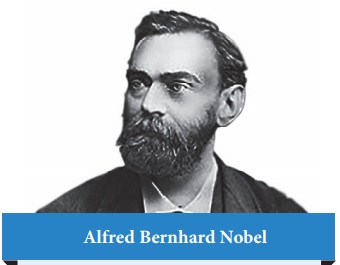Chemistry - Hydroxy Compounds and Ethers | 12th Chemistry : UNIT 11 : Hydroxy Compounds and Ethers
Chapter: 12th Chemistry : UNIT 11 : Hydroxy Compounds and Ethers
Hydroxy Compounds and Ethers

Alfred Bernhard Nobel
Alfred Bernhard Nobel was a Swedish chemist, engineer,
inventor, and philanthropist. Nobel found that when nitroglycerine was
incorporated in an inert absorbent like kieselguhr (diatomaceous earth) it
became safer and more convenient to handle. He patented this mixture in 1867 as
"dynamite". Nobel prizes were established in accordance with his
will. The Noble prizes is considered as one of the precious awards in the
fields of chemistry, literature, peace activism, physics, Economics and
physiology or medicine.

Learning Objectives
After studying this unit the student will be able to
• describe the important methods of preparation and reactions of
alcohols
• explain the mechanism of Nucleophilic substitution reaction of
alcohols and ethers.
• explain the elimination reaction of alcohols.
• describe the preparation and properties of phenols
• discuss the preparation of ethers and explain their chemical
reactions.
• recognise the uses of alcohols and ethers
INTRODUCTION
We have already learnt in eleventh standard that the hydrolysis of an alkyl halide gives an alcohol, an organic compound containing hydroxyl (-OH ) functional group. Many organic compounds containing –OH group play an important role in our body. For example, cholesteryl alcohol commonly known as cholesterol is an important component in our cell membrane. Retinol, the storage form of vitamin A, finds application in proper functioning of our eyes. Alcohols also find application in many areas like medicine, industry, etc., For example, methanol is used as an industrial solvent, ethyl alcohol an additive to petrol, isopropyl alcohol as a skin cleanser for injection, etc., The hydroxyl group of alcohol can be converted to many other functional groups. Hence, alcohols are important resource in synthetic organic chemistry. In this unit, we will learn the preparation, properties and uses of alcohols, phenols and ethers.
Related Topics